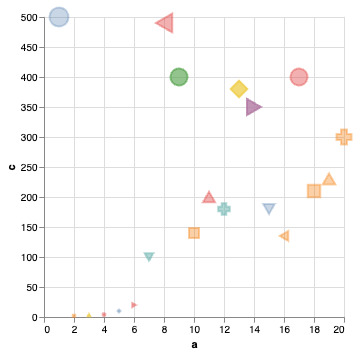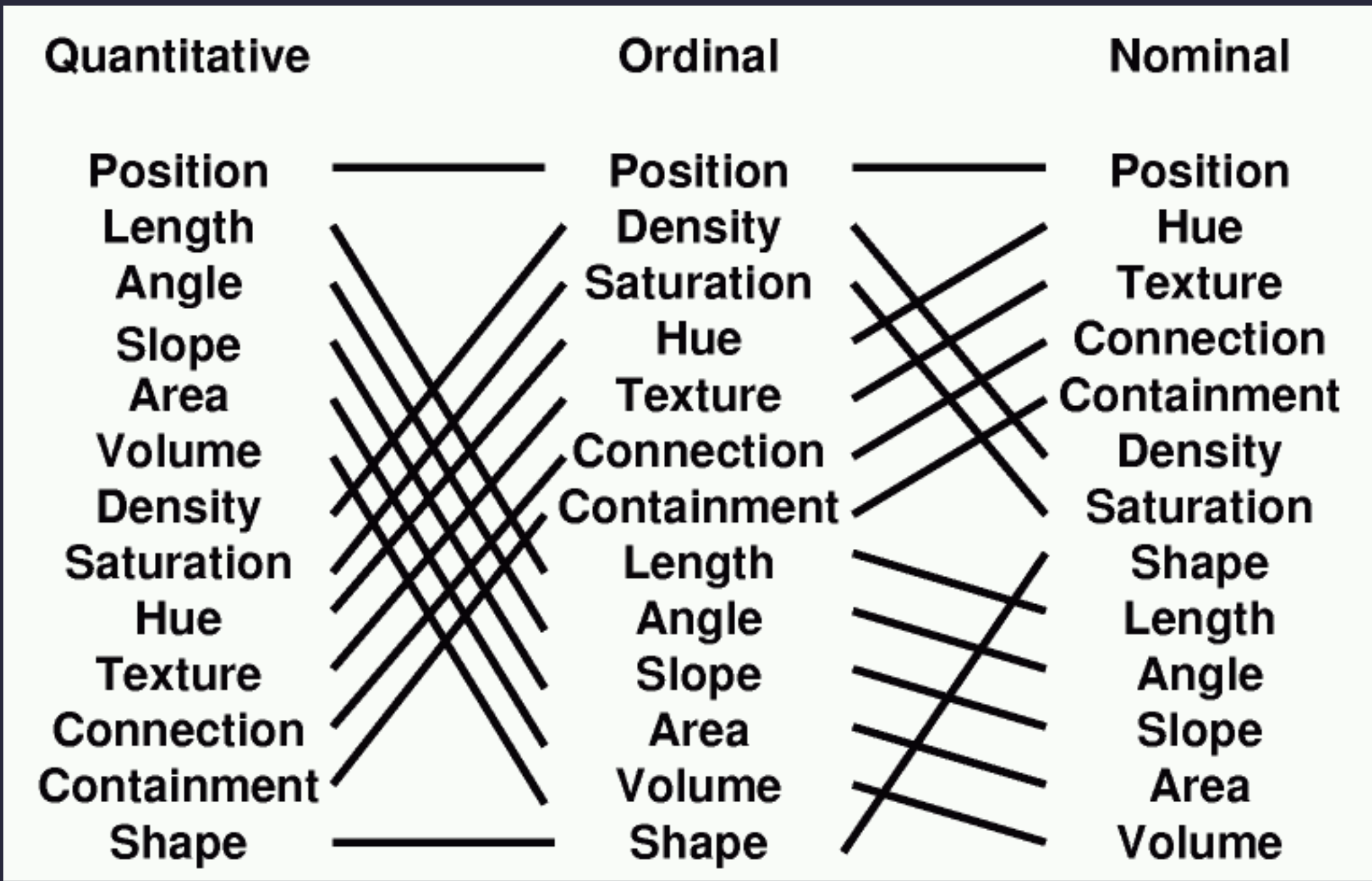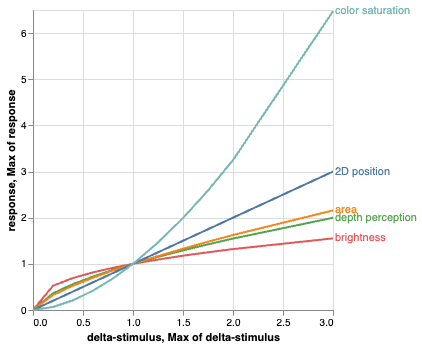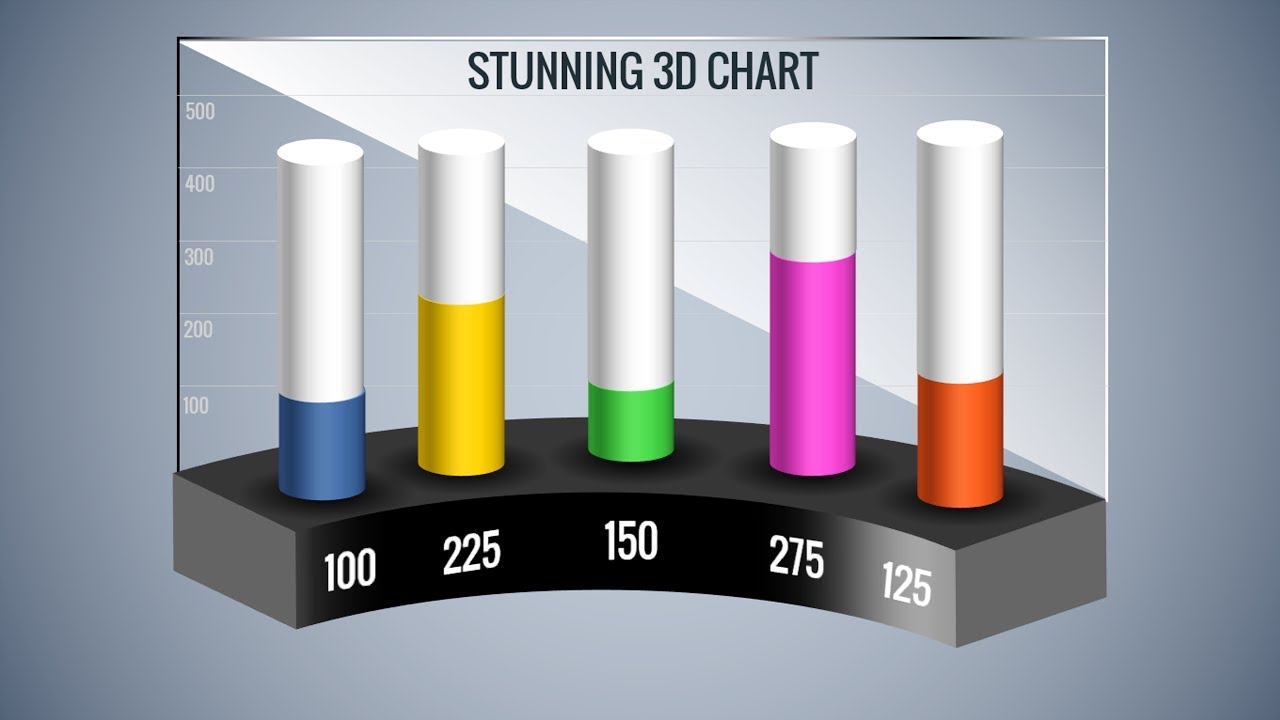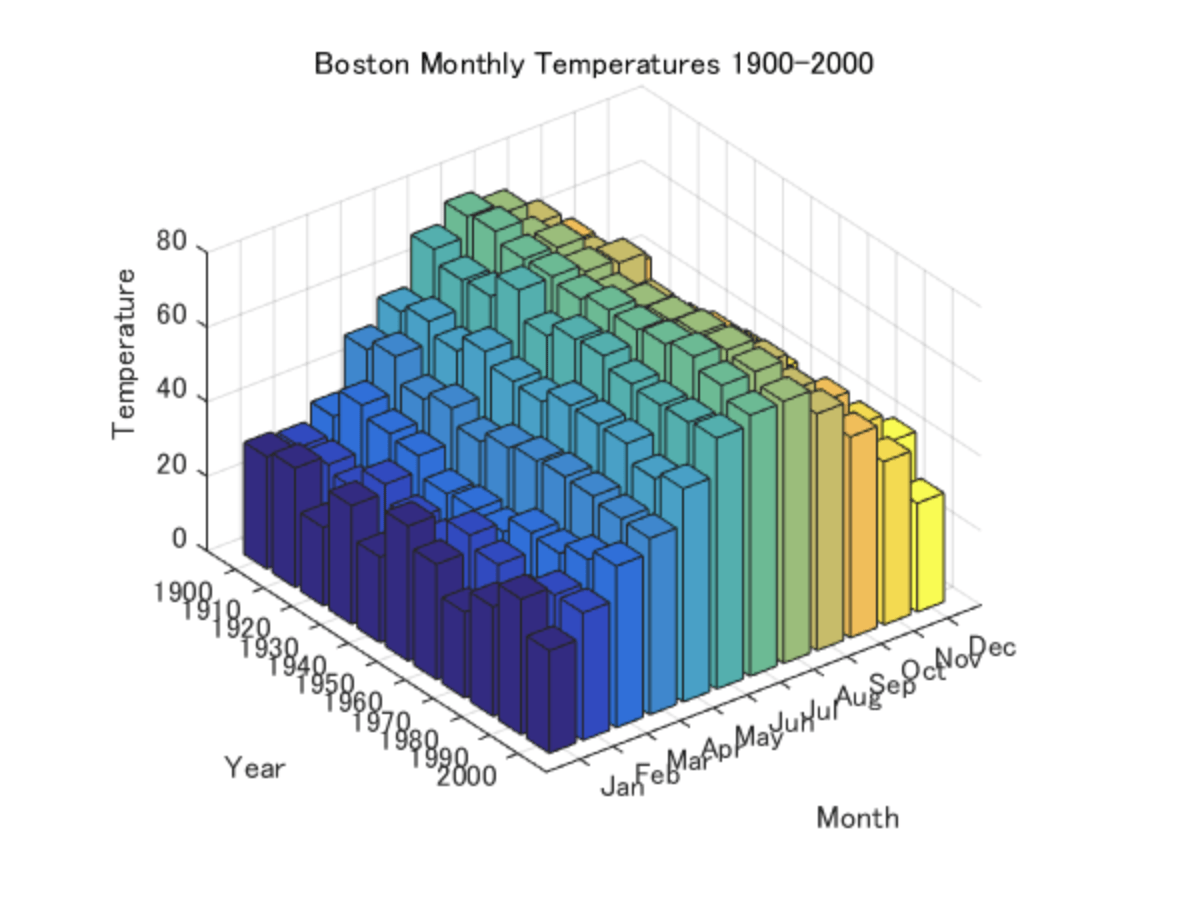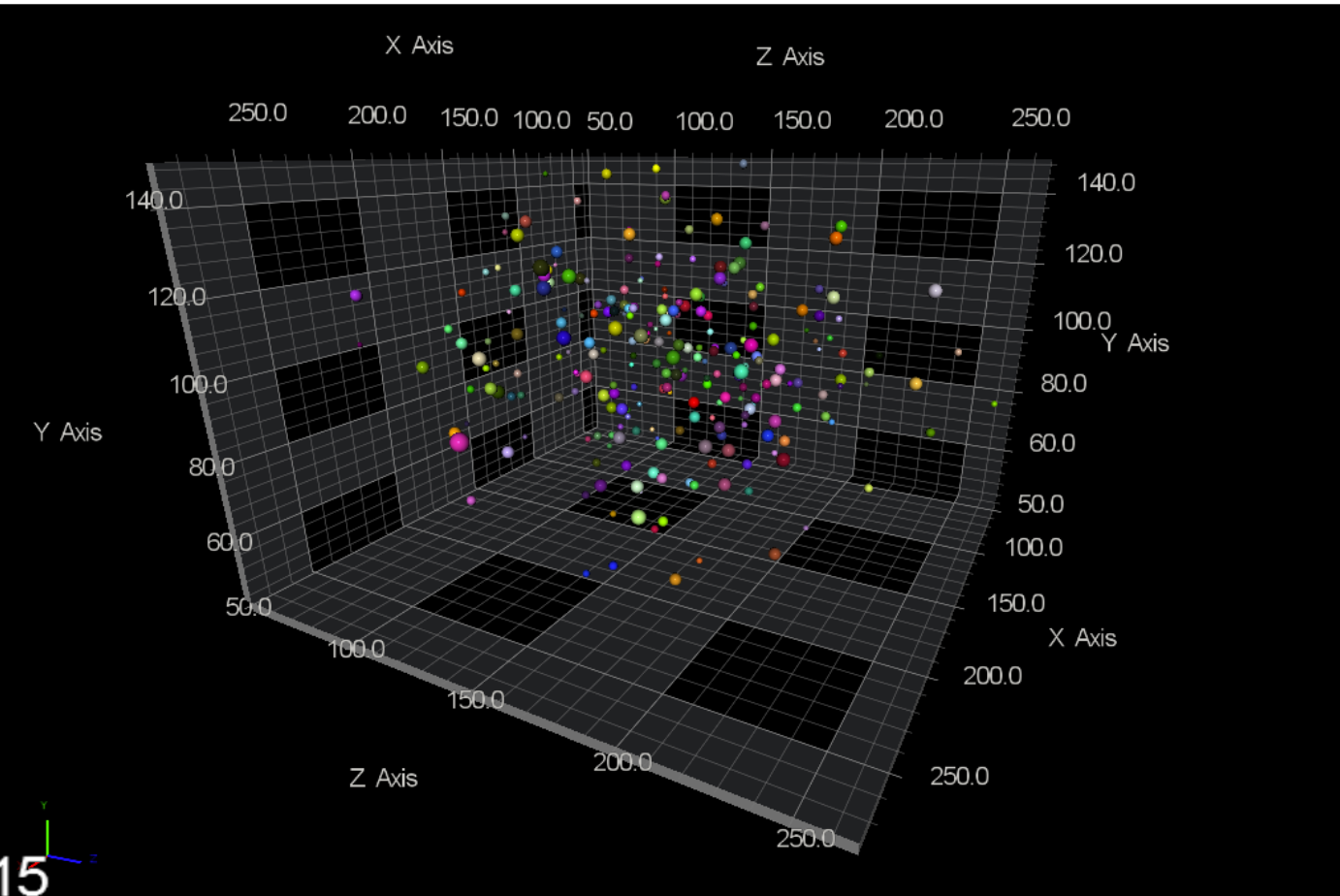3.5 KiB
3.5 KiB
| theme |
|---|
| custom-theme |
Perception & Color
CAPP 30239
Today
- What matters most when creating a visualization?
- How does human perception factor into visualization design?
- Understanding color, and computational representations of it.
What is the most important question when creating a visualization?
What is the most important question when creating a visualization?
Where will the data come from?What type of chart do I use?- Who is the audience?
Audience First
- Who are you presenting to?
- How familiar are they with the data?
- What is their numerical & visualization literacy?
- Via what medium will they receive the information?
- What are you trying to do? (Persuade, Inform, Inspire?)
Only now can we start thinking about data and presentation.
Perception
- Selective - We can only pay attention to so much.
- Patterns - Our brains are pattern-matching machines, audience will benefit from intentional patterns & be distracted by unintentional ones.
- Limited working memory - We hold a very limited set of information in our minds at once.
What do you see?
alt.Chart(random_df).mark_point().encode(
alt.X("a"),
alt.Y("c"),
alt.Color("b"),
alt.Size("c"),
alt.Shape("a:N"),
alt.Fill("b"),
alt.Opacity("b"),
)
What do you see?
Effectiveness Revisited
Altair Channels
- Position (
X, Y) - Angle (
Angle) - Area (
Radius,Size) - Hue, Saturation (
Color) - Texture (
Opacity,Fill) - Shape (mark type,
Shape)
What about?
- Length
- Slope
- Volume
- Density
- Connection
- Containment
Derived Properties
- Length/Area - size of bars (
X,Y) - Slope & Density - affected by scale
- Connection - ex. layering of lines w/ points
- Containment - achieved with layering
What about volume?
Stevens' Power Law
Stevens (1975): Human response to sensory stimulus is characterized by a power law with different exponents with different stimuli.
perception = (magnitude of sensation)a
Smaller a exponent: harder to perceive changes.
Stevens measured values of a by exposing people to varied stimulus and asking them to compare magnitudes.
| Continuum | Exponent |
|---|---|
| Color Brightness | 0.33-0.5 |
| Smell | 0.6 |
| Loudness | 0.67 |
| Depth Perception | 0.67 |
| Area | 0.7 |
| 2D Planar Position | 1.0 |
| Warmth | 1.3-1.6 |
| Color Saturation | 1.7 |
| Electric Shock | 3.5 |
3D Graphs
Instead of 3D Graphs
- Find other channels: hue & size are good candidates.
- Combine different dimensions into side-by-side 2D graphs.
TODO: example of 2D decomposition of a graph
Color
Acknowledgements & References
Thanks to Alex Hale, Andrew McNutt, and Jessica Hullman for sharing their materials.
